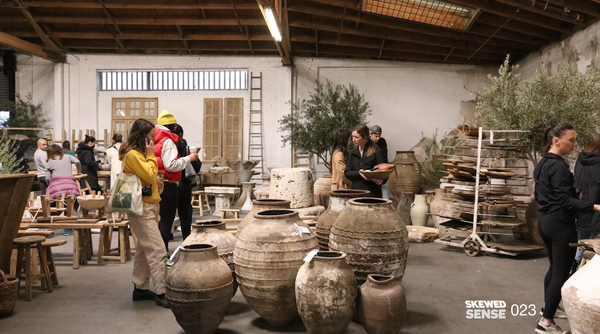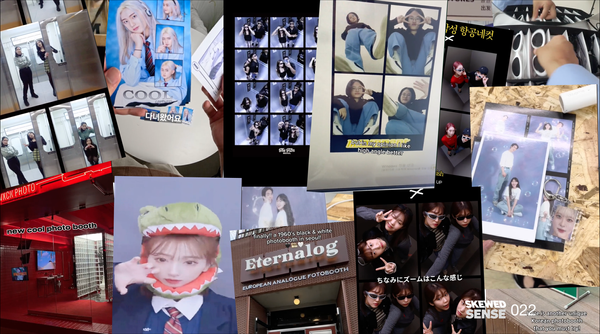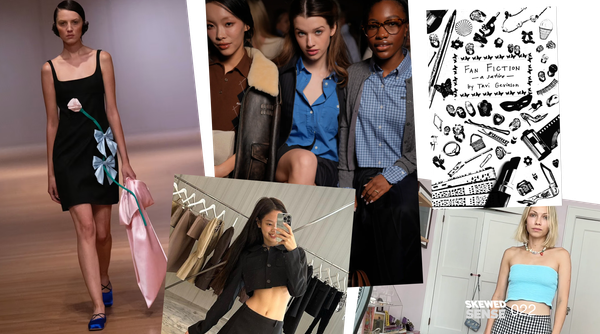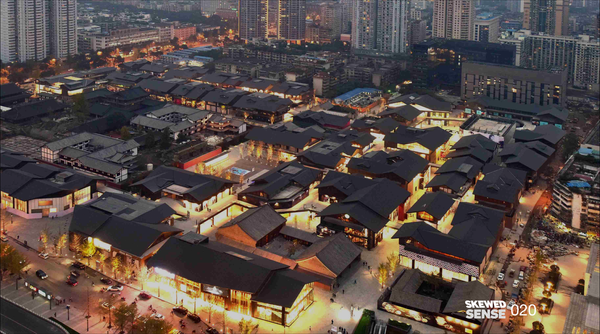We recently published a SKEWED thought on Drops, and how they've evolved from hype culture into new industries. Whilst thinking on that topic, it occurred to us that scarcity is a much-maligned and misunderstood topic within retail. It's often tarred with the 'limited edition' brush, which we think is less than chic – and of coooourse we're all exhausted by the Hypebeast mentality – YET even the most understated among us have the desire for scarce goods. Not all scarcity has to be bad. Scarcity is key to being an 'individual' which is high on most people's list of goals.
TL:DR We think that brands should be engaging with and thinking about what they have that is scarce a whole lot more. We've got a few nice interesting ways in which they can do that without having to resort to limited edition. SOME of which are easy to systemise.
The idea behind making this scarcity framework was to create a big framework that neatly packaged all the different types of scarcity in consumer goods alongside the mindsets behind the buying behaviour. It was a bit ambitious tbh BUT it has been an extremely interesting exercise. Through doing this we made some interesting learnings that we've summarised in ten quick points:
- We found five basic categories of scarcity:
- Manufactured (our bogeyman where production is artificially capped) 🏭
- Technological (innovation creates a bottleneck) 💡
- Resource (raw materials are the bottleneck) 🌍
- Discontinued (out of production so limited supply) 🛑
- Labour (talented people are the bottleneck) 👥
- It might sound like a no-brainer but we're going to say it – being individual is currently desirable. Scarcity is an enabler of this. ✨
- Scarce goods don't have to be expensive or even premium. Thrifted goods especially disprove this. 💸➡️🚫
- Scarcity tends to occur at the two ends of a scale, rather than in the middle:
- Old ↔️ New
- Antique ↔️ Innovative
- Craft ↔️ Hi-tech
- Natural ↔️ Synthetic
- Scarcity is sorta inherently niche, but can also be a good guide to what is emerging. The kinda people that are drawn to scarcity tend to be those elusive early adopters we're always hearing about. 🕵️♂️
- Scarcity should be driven by manufacturing not by marketing. 🏭❌
- Scarcity is often (but not always) about flex culture, even if the flexes are extremely understated.
- Loro Piana that's indistinguishable from Uniqlo is still a flex. 👔
- An Alfa Romeo GTA-R restored by Alfaholics is still a flex. 🚗
- A quaint Victorian cottage in Chiswick is still a flex. 🏡
- A Judith Beck Weissburgunder is still a flex. 🍷
- Hoarder mindset is over. We instinctively prefer people with a 'rock' rather than a 'stock' approach. Hoarding is a mentality born in lean times. 'These Foamposites will get a re-release.' 🪨❌📦
- People that upgrade their phone or camera annually better have a damn good reason for doing so. It feels lame to flex this way. 📱➡️🤷♂️
- Strategically, seasonal scarcity feels undervalued. Something we could get more in touch with. Eating seasonally could make the same journey from hipster to mainstream that using vintage cameras has. 🥗📅🔝
Okay if you want the full framework that is very much WIP please find it below:
1) Manufactured Scarcity (Our Bogeyman)
Limited Editions
| Mindset |
Hypebeast |
| Driven by |
The Hypebeast desire to flex the latest and most limited thing they own. Competitive in nature. |
| Examples |
Supreme collabs | Rolex GMT-Master II "Pepsi" White Gold | Aimé Leon Dore x Porsche 944 Turbo |
Planned Obsolescence:
| Mindset |
Upgrade or Die |
| Driven by |
Honestly, probably a fear of irrelevance, and easy susceptibility to marketing. The smart money here generally buys last years version in the secondary market. |
| Examples |
TV upgraders | latest iPhone havers | Nike AlphaFly 3 carbon plate aficiandos |
2) Technological Scarcity
Early Stage Innovation:
| Mindset |
Better Than Beta |
| Driven by |
Wanting to be the first to own new technology. They're probably gonna own some silly products. The mindset is about telling you about their 'great' purchases |
| Examples |
Rabbit R1 | Boston Dynamics robots | Row 7 Seeds seeds | Apple Vision Pro |
Technologically Sophisticated Manufacturing:
| Mindset |
Innovation Lovers |
| Driven by |
Goods made by interesting and innovative manufacturing. They don't mind things being a little rough round the edges. The mindset is about trying the newness |
| Examples |
Fazioli pianos | ByBorre 4D knit clothing | Arc'teryx Veilance | Pinarello Bolide | Spektrum biopolymer snowboards |
3) Resource Based Scarcity
Scarce Raw Materials:
| Mindset |
Materially Sensitive |
| Driven by |
They're into things made from raw materials that are naturally limited due to their inherent properties or extraction challenges |
| Examples |
Vicuna sweaters | Fair-trade gemstones | Cone Mills White Oak shuttled selvedge raw denim | Crem de la Mer skincare |
Seasonal Ingredients and Resources:
| Mindset |
Seasonal Gourmet |
| Driven by |
Seasonal flavours and ingredients as they become available. Proustian levels of flavour chat. |
| Examples |
Clamped rhubarb | Loire valley white asparagus| Rare white truffles | Beaujolais Nouveau | Tazmanian abalone |
Environmentally Limited Resources:
| Mindset |
Eco-Conscious Consumer |
| Driven by |
Products made from environmentally sustainable materials, especially when the alternative is environmentally unsound. |
| Examples |
Regenerative cotton | Fairtrade / Rainforest Alliance coffee or chocolate | Sustainably harvested wood furniture |
Location-Based Scarcity:
| Mindset |
Terroir Connoisseur |
| Driven by |
Specific geographic regions. In food and wine this is terroir, but. we can apply that concept elsewehere |
| Examples |
DOP wine | Parmigiano-Reggiano | Dutch tulips | Harris tweed | Murano glass. |
4) Discontinued Scarcity
Nostalgia Hunting
| Mindset |
Nostalgic |
| Driven by |
Emotional connection, sentimental value, and a desire to relive or preserve memories. |
| Examples |
Vintage Star Wars figurines | Vintage boho-chic Biba | First pressing Motown records |
Thrift Mania
| Mindset |
Bargain Bricolage |
| Driven by |
The thrill of the hunt, finding bargains, and uncovering hidden gems. The make or marque is not as important as the look and uniqueness. More Vinted than Depop. |
| Examples |
Unusual 60/50 polycotton blend t-shirts | Acupuncture shoes |
Archive Amassing
| Mindset |
Archivists |
| Driven by |
Building a comprehensive collection, preserving history, and potentially investing for future value. Key word here is invest. |
| Examples |
Vintage Helmut Lang | Hodinkee watch collector bros | WWII reenactors | SuperStudio furniture |
5) Labour Scarcity
Artisanal
| Mindset |
Artisan Enthusiast |
| Driven by |
Appreciation for skill, artistry, and the unique qualities of handmade items. Sometimes even made by a singular artisan, where the availability of their labour controls the supply |
| Examples |
Heath Ceramics | William Curley chocolates | Hermes leather goods | Anything from TOAST | Monta Monta Soap | Earl of East Candles |
Bespoke to Me
| Mindset |
Personaliser |
| Driven by |
Desire for exclusivity, personalization, and products that reflect individual tastes and needs. |
| Examples |
Cifonelli bespoke suits | Green River Project furniture | Cartier bespoke service | Sebastian Tarek bespoke shoes |
Cottage Industry Production
| Mindset |
Small Company Supporter |
| Driven by |
These businesses aren't able to take advantage of economies of scale just yet. It's not so much about the craft, as getting to MOQ. |
| Examples |
Fashion East or LVMH Prize small designers | Small Coffee roasters [don't say 4th wave plz] |





